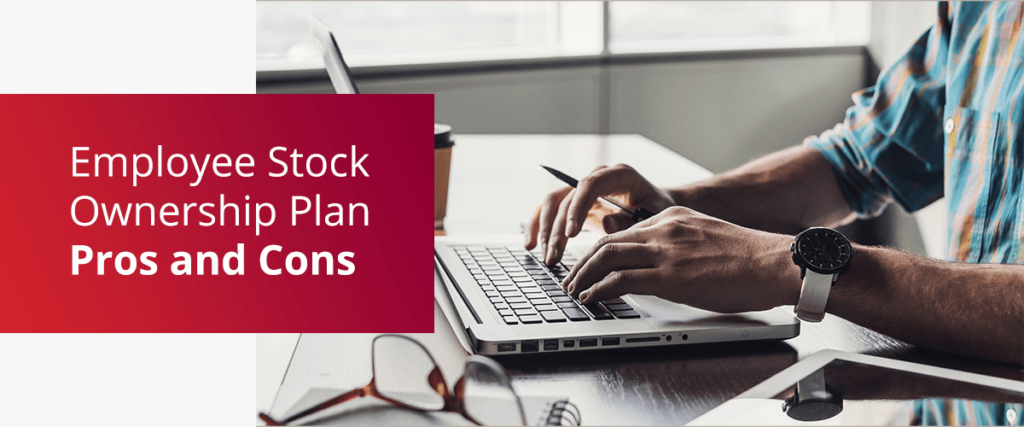
Nearly 6,500 U.S. corporations have an employee stock ownership plan (ESOP), making it a popular retirement option. If you’re considering implementing this structure, you must know what to expect. Knowing the pros and cons and how it compares to other options can help you decide whether it’s right for your organization and employees.
Understanding ESOPs
ESOPs are business retirement accounts that allow workers to own shares in a business and benefit from the company’s profit. If you’re considering implementing one, you must understand how it works to determine whether it’s a smart business move.
How Does an ESOP Work?
If you want to implement a worker stock plan, you need to do the following:
- Establish an ESOP trust.
- Fund the trust with news shares or cash.
- Set up a management program to determine the allocation of shares.
- Appoint a trustee to oversee all this and keep track of the organization’s dividends.
The Role of Employees and Owners in ESOPs
Worker participation isn’t always required, although workers over 21 should have access to the stock ownership program. ESOPs often encourage employee engagement and motivation since workers get all the benefits of shareholders without having any personal liability for the business’s debts.
Since the company owner is no longer the only shareholder, an employee share ownership structure allows them to exit the organization partially or fully while maintaining some responsibility.

The Advantages and Disadvantages of ESOPs
The average retirement age has decreased recently. With people retiring earlier, choosing a good retirement plan is critical. When evaluating an ESOP, consider its pros and cons.
Are ESOPs Good for Employees?
Here are some ESOP benefits for employees:
- Potential financial gains: An ESOP forms part of an employee’s overall compensation, which means they can make more money. Since workers are shareholders, their hard work can lead to increased compensation.
- Career growth and stability: Companies with ESOPs often have lower worker turnover, meaning workers grow in their careers and benefit from job stability.
- Enhanced employee motivation and retention: When workers are personally involved in a company and benefit from their success, they’re much more likely to feel invested in it and stay with the team for much longer.
- Tax-deferred contributions: If a shareholder sells their shares — such as if they quit their job — they may be eligible for tax deferral treatment to avoid immediate taxation.
- Tax advantages: Since employees make share investments pre-tax, ESOP payments are tax-deductible.
What Are the Downsides of an ESOP?
As with all retirement options, employee share plans do have some cons to them as well:
- Risk and financial exposure: The price per share depends on the company’s success, which means it can be limited. A share’s value also fluctuates over time, so this is a riskier retirement option since it isn’t stable.
- Complexity and administrative costs: An ESOP can be a complicated retirement strategy. Companies must set up a trust and assign someone to manage it and oversee the distribution of dividends. They must also determine how to manage it or hire someone to do it, which has financial implications.
ESOPs and Retirement Planning
Only 10% of people at retirement age are comfortably retired, so choosing a retirement option and starting the savings process earlier is in your best interests. It’s always a good idea to look at your options to help you evaluate what meets your needs best.
Retirement Planning With ESOPs
When workers participate in an ESOP, they can choose to have those funds placed in a retirement fund, similar to a 401(k) or IRA. However, if they retire from a company, they also have the option to retain their dividends to still have an impact.
While an ESOP is an excellent addition to a retirement strategy, it works best when supplemented by other retirement efforts, especially since it can be risky. Balancing this retirement plan with another is a great way to reap the financial benefits while remaining financially secure.
ESOP vs. Traditional Retirement Plans
When selecting a retirement plan for your workers, it’s crucial to understand some of the leading retirement options out there and how they compare to ESOPs:
- 401(k): The main difference here is that employers fund shares that workers receive in ESOPs, whereas workers fund 401(k)s — although employers can also match their employees’ contributions.
- IRA: An individual retirement account (IRA) is a savings plan with tax advantages aimed at helping employees retire comfortably. ESOPs and IRAs don’t need to exist in isolation — if an employee chooses to have their shares go into a retirement fund, they can have them roll over into an IRA.
Diversification is crucial in retirement since having multiple retirement investments means your workers aren’t overly reliant on one source. Even if you reward workers with an ESOP, you should encourage them to look into other retirement options to supplement it.
Financial Implications of ESOPs
When considering your retirement plan options, you should always consider them from a business perspective, which means you must consider the financial aspects. You must weigh the tax benefits against the economic risks to determine what course you want to take.
Tax Implications of ESOPs
In terms of taxes, ESOPs offer some great benefits:
- Once an ESOP owns all your business’s shares, you don’t need to pay federal income tax.
- Loans used to fund ESOPs are tax-deductible.
- Capital gains tax burdens are less severe when selling as you can defer your tax.
Financial Risk of ESOPs
Here are a few financial risks to think about if you’re considering an employee share plan:
- Market volatility: If a dip in the market affects your stock, it can affect your employees’ retirement as their dividends’ value will decrease.
- Overreliance on company performance: Because the company’s performance affects their shares, workers become overly reliant on the organization’s performance — which means that if the performance isn’t excellent, employees may face the consequences.
Considerations for Employees and Employers
There are a few more critical considerations for both employers and employees regarding ESOPs and whether they’re the best fit for everyone involved in the company.
What Happens to ESOP if Someone Quits or Leaves?
Here are a few options for when an employee in a company with an ESOP structure leaves their job:
- Usually, the organization repurchases the shares from the employee. The worker can then get a cash payment or roll the cash into a retirement plan.
- The employee can keep their shares and receive dividends.
However, it’s important to note that some situations may differ. If an employee is fired, they often forfeit their dividends. And if they haven’t been with the company very long, they may also forfeit their stock options.
Are ESOPs Good for Your Business?
ESOPs are certainly a viable business solution, especially in the long term. The tax advantages and worker retention alone make them worth it for many businesses. Still, this structure also allows the owner to maintain their legacy even if they need to exit the business.
They also offer ease of share ownership and a way to transition slowly if you plan on selling your business.
Get Started on Your ESOP With Accuplan Benefits Services
At Accuplan, we believe people should retire their way, and ESOPs are one way of accomplishing this. If you’ve weighed the ESOP pros and cons and decided you want to experience the ESOP advantages, we can help.
Our experts manage over $2 billion in assets and know the ins and outs of the retirement industry. We can help you navigate your options, and our dashboard makes it easy to manage your retirement portfolios. Simply fill out our online form to get started!

Our information shouldn’t be relied upon for investment advice but for information and educational purposes only. It is not intended to provide, nor should it be relied upon for accounting, legal, tax or investment advice.